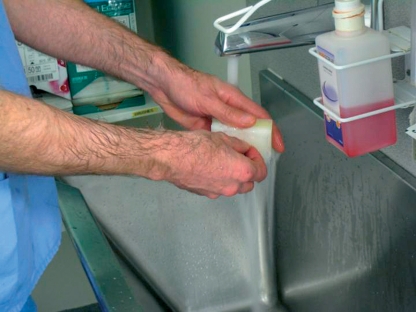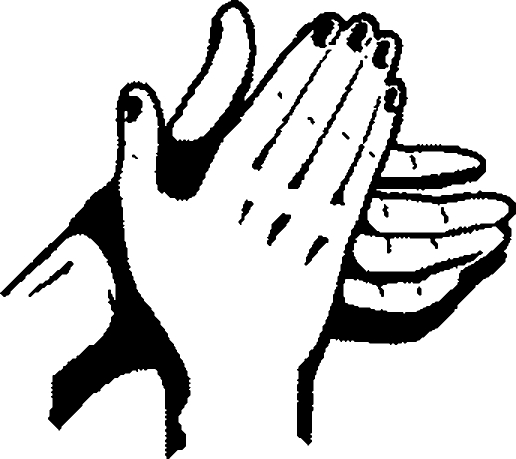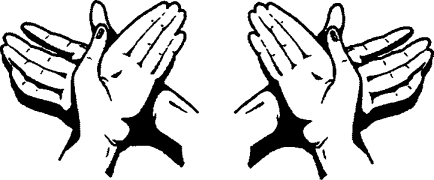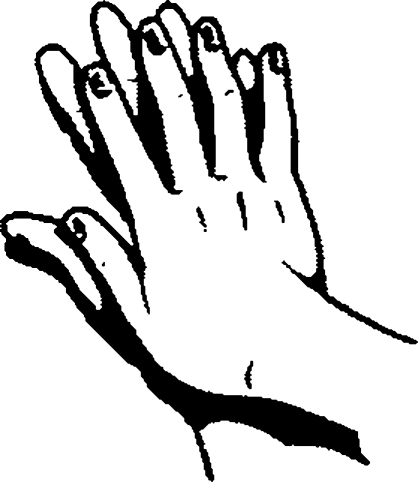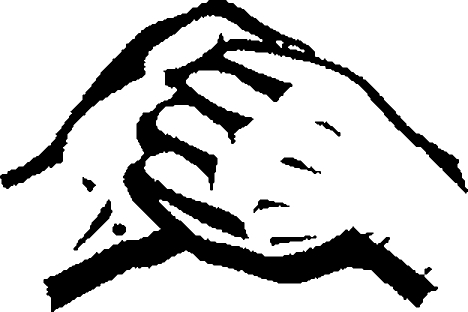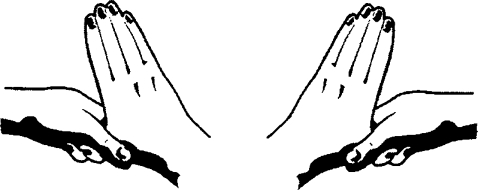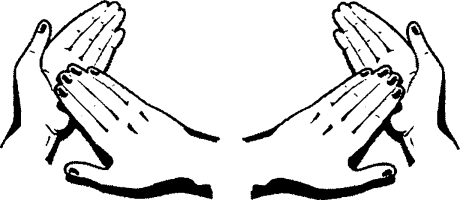Hand washing is a fundamental principle of infection control
Eyes are susceptible to infection by many organisms, including gram-negative bacilli, adenoviruses, the herpes simplex virus, and fungi. Infection puts eyes at higher risk of complications after cataract surgery.
Rub palm to palm
Hand washing is the most important, fundamental principle of infection control. It must be strongly encouraged and practised by all disciplines in the health care setting.
Hand washing is required in the following situations:
Rub back of left hand over right palm and vice versa
before any aseptic procedure
before and after handling any patient
after handling any soiled item
before and after handling food
whenever hands are, or even feel, soiled
when entering and leaving a clinical area
after using the toilet or assisting a patient in the toilet
Rub palm to palm with fingers interlaced
Many health care workers are unaware of the need for frequent hand washing and that a certain technique is required for hand washing to be effective.
Rub backs of fingers on opposing palms with fingers interlocked
Written instructions for hand washing, as given below, should be displayed in all clinical areas.
Wet hands with clean, preferably running, water
Apply soap or cleanser
Rub palm to palm
Rub back of left hand over right palm
Rub back of right hand over left palm
Rub palm to palm with fingers interlaced
Rub backs of fingers on opposing palms with fingers interlocked
Rub around right thumb with left palm
Rub around left thumb with right palm
Rub palm of left hand with fingers of right hand
Rub palm of right hand with fingers of left hand
Rinse off soap with clean, preferably running, water, and dry well.
Rub around right thumb with left palm and vice versa
Rub palm of left hand with fingers of right hand and vice versa




